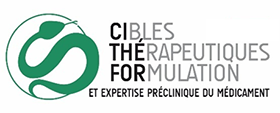L'article intitulé "Heparinized collagen-based hydrogels for tissue engineering: physical, mechanical and biological properties" vient d'être publié dans le journal "International Journal of Pharmaceutics".
Les auteurs sont : Meiling Wu, Anne Sapin-Minet, Loïc Stepan, Julien Perrin, isabelle Raet-Fries, Caroline Gaucher
Doi : https://doi.org/10.1016/j.ijpharm.2024.125126
Abstract :
As the main protein forming the vascular extracellular matrix, collagen has a weak antigenicity, making it an attractive candidate for coatings of vascular grafts. In order to bring antithrombotic properties to collagen for obtaining suitable blood compatibility of surfaces and further bioactive molecule carrying capacity, heparinization appears as a method of choice. Thus, in this article, pH-driven self-assembly was used to form collagen-based hydrogels with physical incorporation of heparins, especially low molecular weight heparin or unfractionated heparin at 1 IU/mL and 6 IU/mL. These heparinized hydrogels were evaluated for their physicochemical properties including gelation kinetic, spreading, viscoelasticity, microstructure and heparin quantification, and their biocompatibility such as cytocompatibility and their capacity to release bioactive heparins with antithrombotic properties. The loading capacity of collagen-based hydrogels was higher for unfractionated heparin (60 to 80 %) than for low molecular weight heparin (20 %). Interestingly, the highest concentration (6 IU/mL) of heparin used to form collagen-based hydrogels resulted in the formation of a softer hydrogel owning a better spreadability compared to 1 IU/mL and non heparinized collagen-based hydrogel. The 3D structure observation showed a layered formation with visible pores or spaces between the layers in all types of collagen-based hydrogels. These layers are interconnected by fibrous structures, suggesting a networked architecture. Moreover, the amount of heparin released from collagen-based hydrogel prepared with 6 IU /mL was higher than from those heparinized with 1 IU/mL attested by a delay in blood coagulation (activated partial thromboplastin time and thrombin time) and the abolishment of thrombin generation. Those hydrogels were also biocompatible, with low albumin adsorption and no impact on cell viability. Finally, heparin is retained in these hydrogels for at least seven days after cell seeding, providing the possibility of long-term antithrombotic properties. Thus, we succeeded in develop/obtain coatings with antithrombogenic properties, biocompatible and able to retain heparins at least seven days, making them good candidates with a great potential for the development and application of efficient blood-contacting materials.

